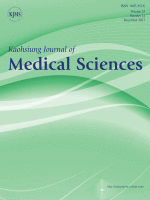Hsu WH, Wu IC, Kuo CH, Su YC, Lu CY, Kuo FC, Jan CM, Wang WM, Wu DC, Yu FJ.
Kaohsiung J Med Sci. 2010 Feb;26(2):76-83.
Abstract
Proton pump inhibitors (PPIs) are the most potent anti-acid agents and are extensively used worldwide. PPI-induced hypergastrinemia is one of the very few side effects associated with these drugs. However, because hypergastrinemia is related to the occurrence of colonic adenomatous polyps, the purpose of this study was to analyze the relationship between the occurrence of gastrointestinal polyps and hypergastrinemia induced by PPIs. This study included 259 patients who underwent colonoscopy and esophagogastroduodenoscopy between January and August 2007. Chart records, including medication history and fasting plasma gastrin level, were reviewed and analyzed. Any subtle polypoid lesions in the stomach and colon were sampled by biopsy for histological examination. Helicobacter pylori infection status was examined by a rapid urea test during esophagogastroduodenoscopy. All patients underwent endoscopy examinations. A total of 122 patients were receiving PPI treatment for either peptic ulcer disease or reflux esophagitis and were included as the study group. The remaining 137 patients were not treated with PPIs and served as the non-PPI group. The mean fasting gastrin level in PPI users versus non-PPI users was 121.8 ng/L versus 56.8 ng/L, respectively (p < 0.001). Although the prevalence of gastric gland polyps was higher in the PPI group (65.6% vs. 37.2%, p < 0.001), there was no difference in the prevalence of colonic adenomatous polyps observed (22.13% vs. 22.62%, p = 0.928). In conclusion, the prevalence of gastric polyps, particularly fundic gland polyps, was higher among PPI users. However, the prevalence of colonic polyps was not affected by PPI use, regardless of past history of colonic adenomatous polyps.
Link to abstract on PubMed: Hsu WH, et al; Kaohsiung J Med Sci. 2010 Feb;26(2):76-83.


